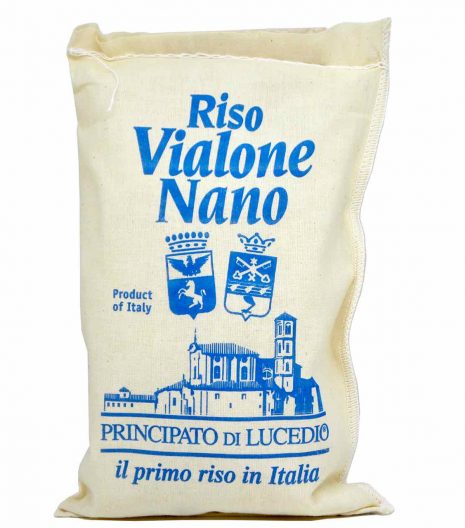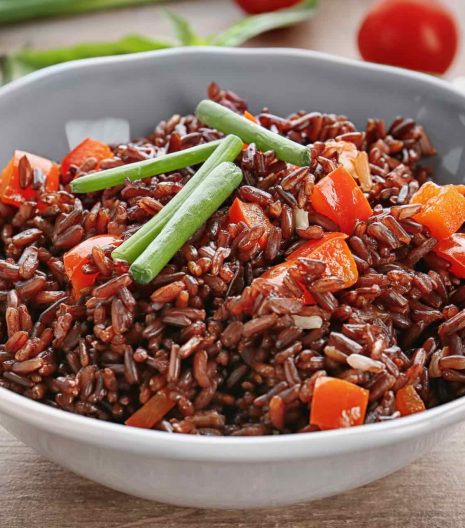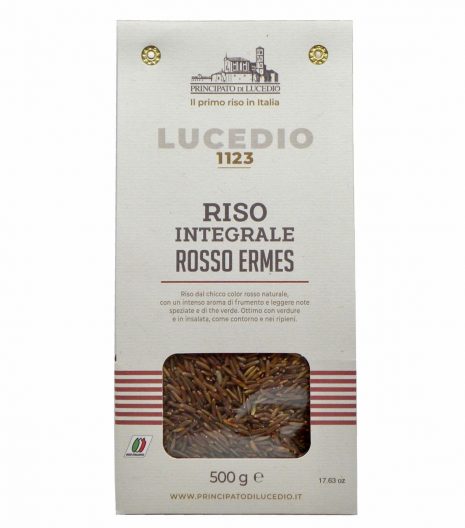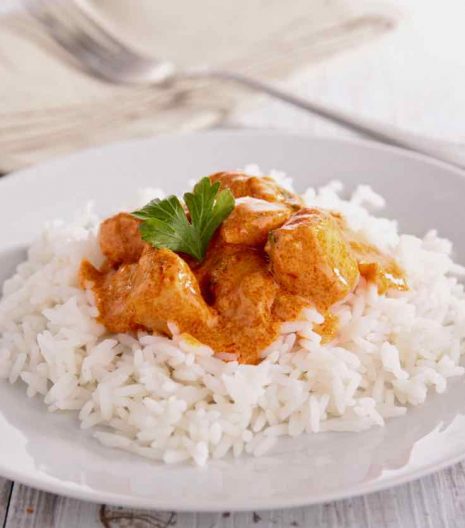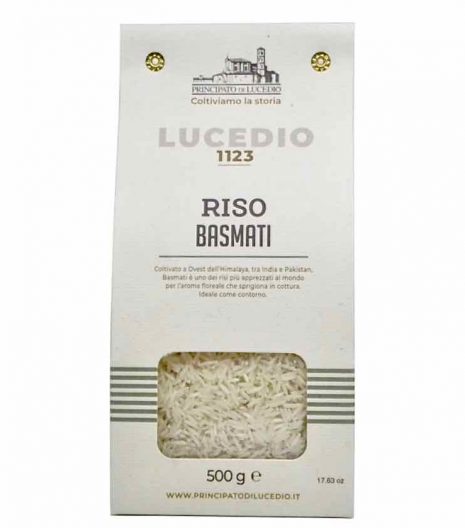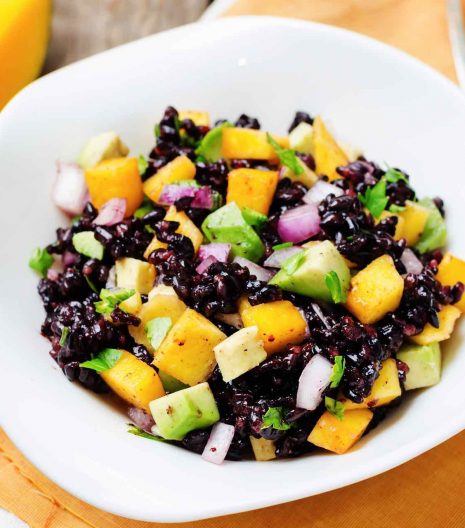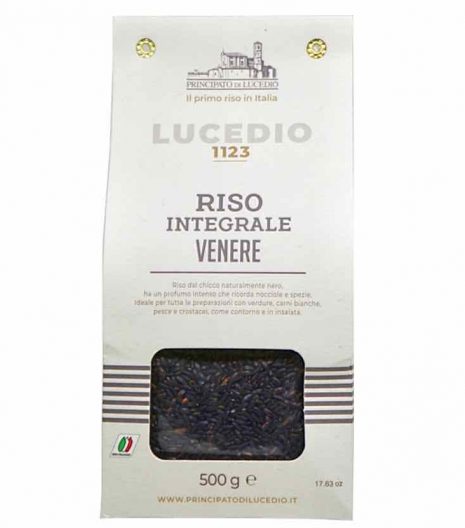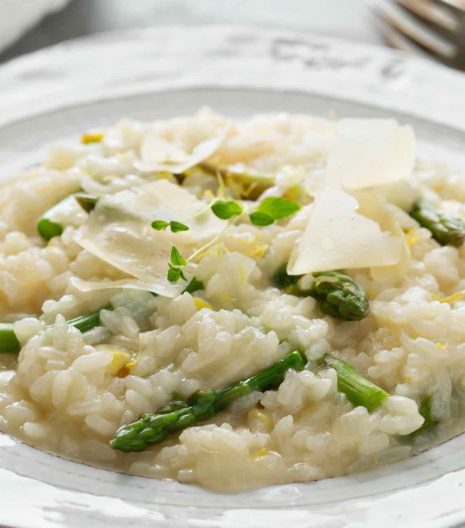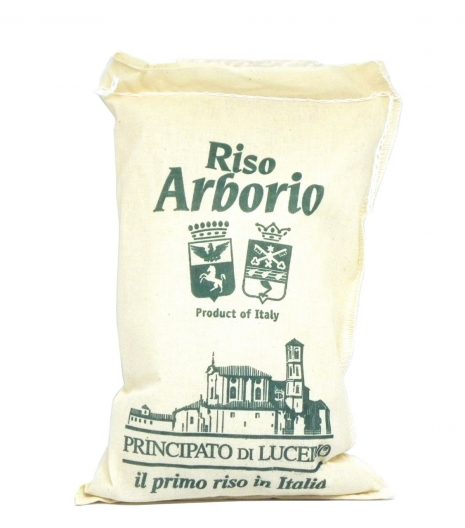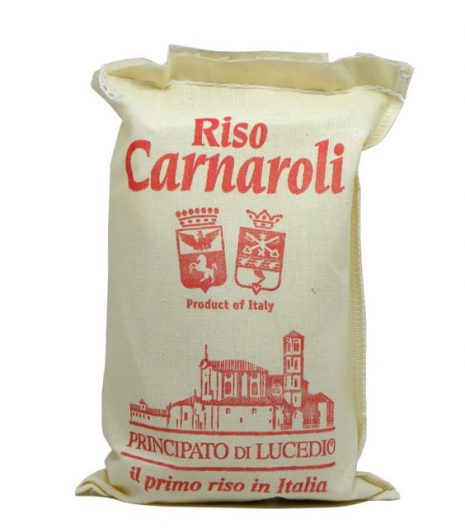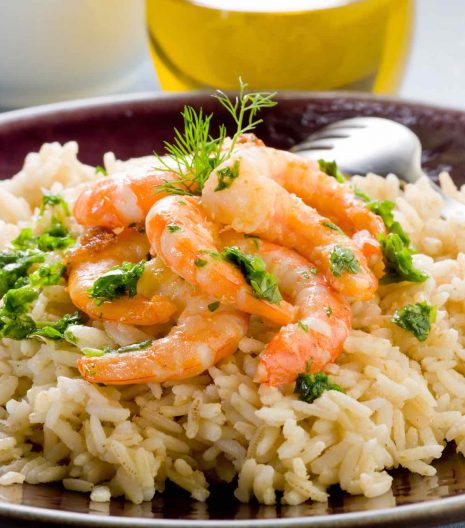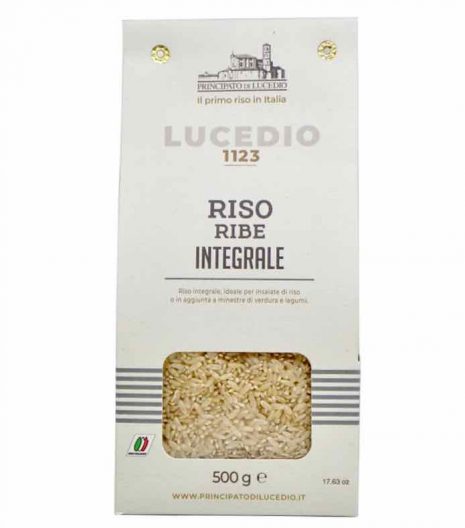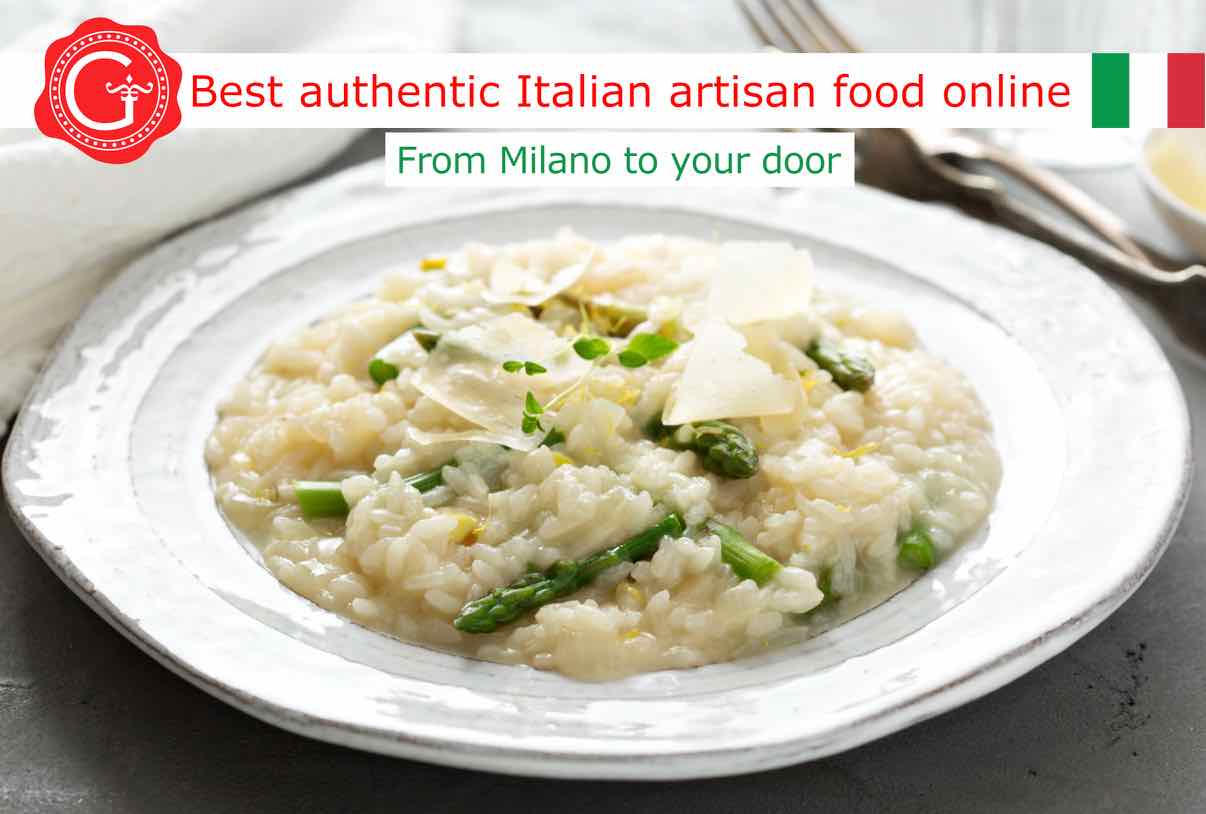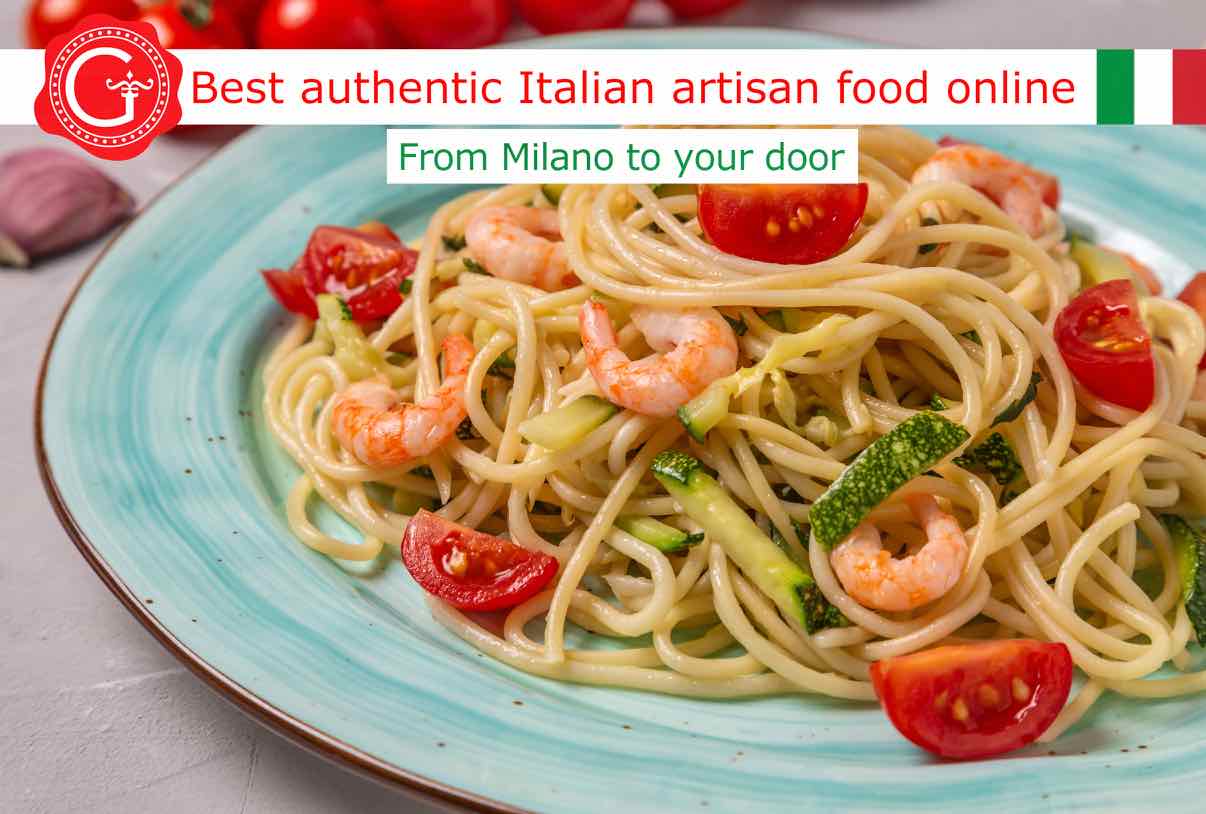Risotto Milanese is considered, as the name states, a typical dish of the Milanese cuisine.
In Italy we say ‘Risotto alla milanese’, that translates ‘Risotto in the Milanese way’.
As reported in the 2007 report of the Municipality of Milan, on December 2007 the council approved the municipal denomination (De.Co.) for the risotto alla Milanese, as well as for four other products: michetta,panettone, osso bucoand cassoeula.
There are various opinions about the birth of the risotto Milanese recipe and its history, and some indicate that the risotto Milanese is another thing than the dish that is normally referred to as saffron risotto.
Let’s start by seeing the ingredients and preparation of the risotto Milanese according to the recipe of the municipal denomination dish. Then you will find information about the history, the risotto Milanese with ossobuco and the sautéed risotto.
FOLLOW US
INGREDIENTS FOR 6/7 PERSONS
The recipe of the Risotto Milanese with the municipal designation of the Municipality of Milan indicates the following ingredients:
- Carnaroli rice, Arborio or Vialone Nano 550 g
- Butter 50 g
- Ox or steer chopped bone marrow 30 g
- light and dark roast beef fat 2 table spoons
- Boiling broth (must not be from stock cube): 2-3 liters
- Small onion minced fine: 1
- One small piece of raw butter
- A tuft of saffron threads or a bag of saffron
- Salt
- Abundant grated Grana cheese
- If the roast-beef fat is missing, increase the marrow up to 60 g
HOW TO PREPARE RISOTTO ALLA MILANESE
The preparation of risotto Milanese according to the deposited recipe involves several steps, which we distinguish here in sub-paragraphs dedicated to specific topics.
First steps and broth
- Put the marrow, butter, roast beef fat and onion in a casserole. Cook over low heat until the onion has turned a golden color. Add the rice and mix it well to absorb the seasoning.
- At this point, raise the heat and start pouring the boiling stock onto the rice with a ladle, continuing to stir regularly with a wooden spoon.
- As the broth evaporates and is absorbed, continue to cook over a high heat, gradually adding more broth with the ladle until the rice is cooked, making sure that the rice remains al dente (cooking takes about 14 to 18 minutes, depending on the quality of the rice you are using).
Saffron, creaming, salt
As far as saffron and creaming are concerned, the recipe provides the following information:
Once you have cooked for two-thirds, add the saffron pistils, previously dissolved in the broth: if, however, saffron powder is used, it must be added at the end of cooking so as not to lose the scent. When cooked, add the butter and the Grana and leave to cream for a few minutes. Season with salt to taste.
All’onda, with the spoons
The recipe also indicates the following:
- The risotto must be rather liquid (‘all’onda’, that translates ‘in the way of a wave’, beacause it should ripple like the sea), with the grains well separated, but bound together by a creamy whole. It is important non to add wine, which would kill the scent of saffron. It is eaten with a spoon, accompanied by red wine, and still leaving grated Grana cheese available for the guests.
- Do not cook more than seven/eight servings at a time.
SHOP ONLINE THE BEST ARTISAN ITALIAN INGREDIENTS FOR YOUR DISHES
On Gustorotondo you find the best artisan Italian ingredients for your dishes:
white and brown rice, extra virgin olive oil, wine vinegar, high-quality artisan pasta.
We look for producers who have high-quality standards, and we offer artisan Italian good products that enhance the tradition and authentic flavours of the Italian cuisine.
Gustorotondo was born as a traditional Italian food store in the center of Milan, and then started the e-commerce business. Now you can shop traditional Italian food online on Gustorotondo. You can buy from all over Italy, from England, from Germany, from the Netherlands, from the Czech Republic, and from all the other European countries.
Shop online the best authentic artisan Italian food at Gustorotondo!
RISOTTO ALLA MILANESE HISTORY
The history of risotto Milanese comes from afar, and mixes with legends. How did we get to the recipe recently certified with municipal designation?
Valerio di Fiandra and saffron
According to a legend, the risott giald (that is, the yellow risotto) was born in 1574. An aide to Valerio di Fiandra, a Belgian master glassmaker who worked on the stained glass windows of the Cathedral of Milan, decided to make the rice dish colored for the wedding of the daughter of his master. To do this, he used a little saffron, and the risotto Milanese was born.
The yellow risotto in Jewish cuisine
John O’Connell, in his book The Book of Spice: From Anise to Zedoary, indicates that Claudia Roden, well known cookery writer, believes that the Milanese risotto derives from the yellow risotto, a specialty of the Jewish communities in Ferrara and Venice served on Saturday as a first course or side dish.
Bartolomeo Scappi and the ‘vivanda di riso alla lombarda’
Bartolomeo Scappi, in his Opera di M. Bartolomeo Scappi, cuoco secreto di Papa Pio V, published in 1570 in Venice, provides directions Per fare una vivanda di riso alla lombarda sottestata con polpe di polli, cervellate e rossi d’uova, that is to make a dish with rice in the way of Lombardy. The cervellata, a typical Milanese sausage, is colored and flavored with saffron, and from this it derives that the food was yellow.
Felice Luraschi and the Risotto alla milanese giallo
In his La Cucina milanese, that translates ‘The Milanese cuisine’), Fabiano Guattieri indicates that the risotto cooking way for yellow rice is not witnessed until 1829. In that year, Filippo Luraschi’s book Nuovo cuoco milanese economico was published, and here we find a recipe for Risotto alla milanese giallo, that translates yellow risotto Milanese.
RISOTTO MILANESE WITH OSSOBUCO
The risotto Milanese with ossobuco is a classic.
The word ossobucomeans hollow-bone.
The cut of meat used to prepare the ossobuco is the rear calf shank of veal.
According to the Confraternita dell’Ossobuco (Confraternity of Ossobuco) the ossobuco must be cooked in a saucepan on the fire. In his La cucina milanese, however, Fabiano Guattieri points out that Milanese cuisine uses low temperatures (for this type of cooking the oven at 140 °C instead of 180 °C), and in this way it is possible to cook the ossobuco obtaining particularly soft meat.
To extract the marrow there is a special cutlery, called the esattore, that translates collector, which helps to extract well the pulp.
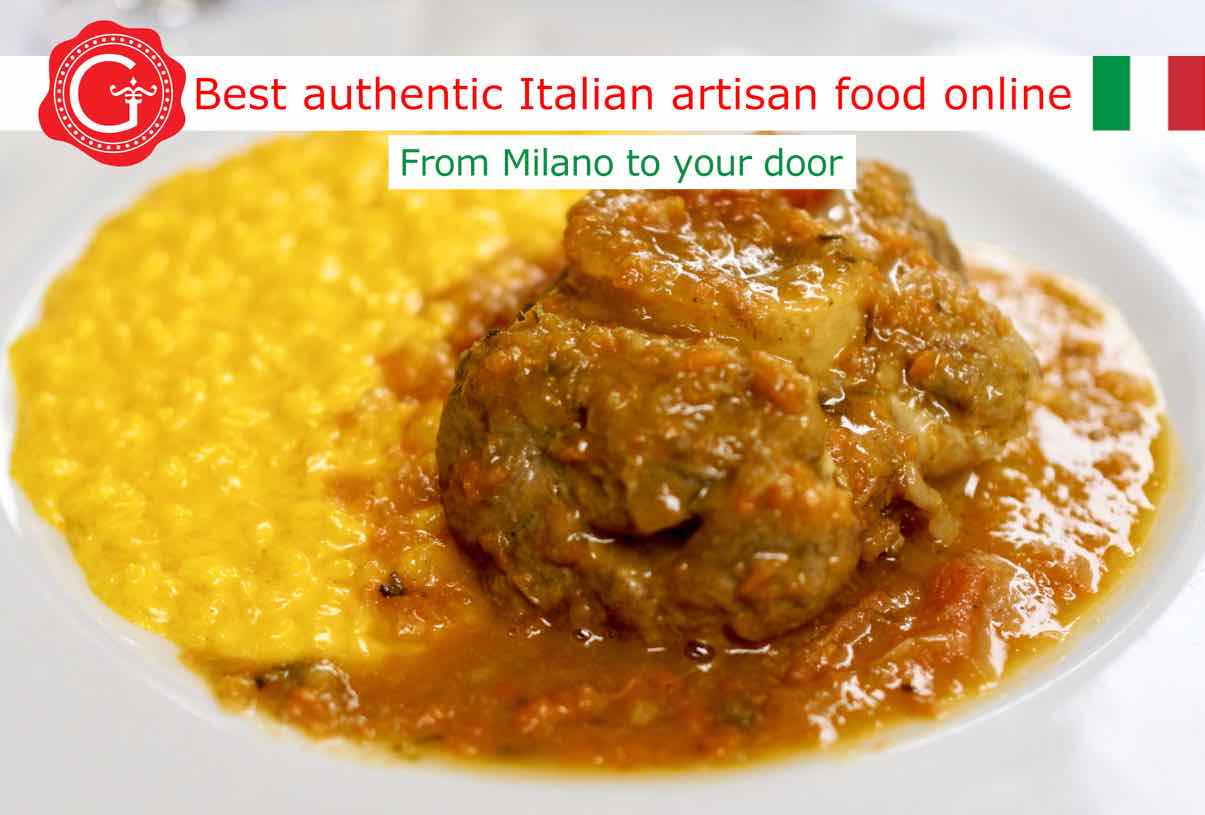
SAUTÉED RISOTTO MILANESE
Sautéed risotto, that is to say stir-fried risotto, is very tasty. According to some, it is even better than freshly made risotto.
To prepare it, create the shape of a pie with your hands. Then, place a pan on the stove. Put a little butter in the pan and heat it. At this point, place the pie in the pan and let it form a crust. Then, place the pie on a plate and turn it carefully. Now, put it back in the pan so that the crust also forms on the other side.
WHICH RISE TO USE FOR THE RISOTTO MILANESE?
Carnaroli is often used to make risotto. By law, in Italy under the trade name Carnaroli other varieties of rice can also be sold. If you like, find out more about Carnaroli.
Also other rice varieties, such as the Vialone Nano and the Arborio, are suitable for preparing risotto. This is due to the good balance between absorption of flavors and creaminess on the one hand, and compactness of the grains, which must remain distinct from one another, on the other. Find out more about risotto.



